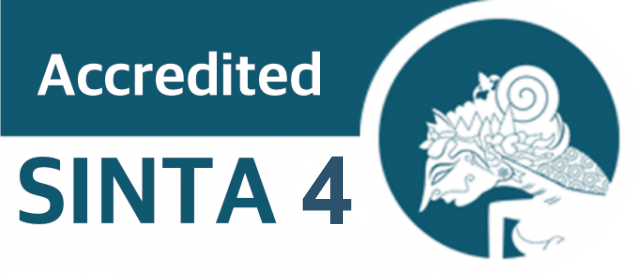Enhancing Student Outcomes in Acid-Base Titration Through Assessment for Learning
DOI:
10.29303/jpm.v20i2.7433Published:
2025-03-13Issue:
Vol. 20 No. 2 (2025)Articles
Downloads
How to Cite
Downloads
Metrics
Abstract
The purpose of this study was to describe the implementation of assessment for learning-oriented learning and learning outcomes on acid-base titration material in class XI. This research was conducted in class XI-1 and XI-5 SMA Giki 1 Surabaya. The results showed that the implementation of assessment for learning-oriented learning on acid-base titration material as a whole received very good criteria. This is evidenced by the average percentage of implementation scores at the first meeting of 99.3% and 98.5% for classes XI-1 and XI-5, as well as the second meeting of 99% and 99.5% in classes XI-1 and XI-5 with the criteria for each meeting is very good. Learning outcomes through assessment applications for learning-oriented learning have increased in one sample t-test. The test found that posttest2 XI-5 - posttest2 XI-1 in both classes got a p-score> 0.05, then Ho was accepted, and Ha was rejected. Thus, the score for posttest 2 XI-1 was smaller than that of posttest 2 XI-5. There is no significant difference in posttest 2 between the two classes. So from this, it can be concluded that learning that applies the Assessment for Learning-oriented student worksheet is effective even though the average results of the two classes show differences.
References
C. Gusyanti and S. Sujarwo, “Analysis of Student Worksheets (Lkpd) Based on Problem Based Learning on Student Learning Outcomes,” J. Pendidik. LLDIKTI Wil. 1, vol. 1, no. 02, pp. 47–51, 2021, doi: 10.54076/judik.v1i02.148.
N. A. Negari, L. Sabdaningtyas, and N. Nurhanurawati, “The development of E-LKPD through problem-based learning to improve the sixth-grade students’ Mathematics mastery,” Int. J. Educ. Stud. Soc. Sci., vol. 1, no. 3, pp. 124–128, 2021, doi: 10.53402/ijesss.v1i3.27.
R. Yanuarni, P. Yuanita, and M. Maimunah, “Pengembangan Perangkat Pembelajaran Model Problem Based Learning Terintegrasi Keterampilan Abad 21,” AKSIOMA J. Progr. Stud. Pendidik. Mat., vol. 10, no. 2, p. 536, 2021, doi: 10.24127/ajpm.v10i2.3331.
I. Of, E. B. On, P. Based, L. T. O. Improve, and S. Outcome, “Implementasi E-Lkpd Berbasis Problem Based Learning-Stem Untuk Meningkatkan Hasil Belajar Dan Kemampuan Berpikir Kritis Pada Implementation Of E-Lkpd Based On Problem Based Learning-Stem To Improve,” vol. 13, no. 3, pp. 199–204, 2024, doi: 10.26740/ujced.v13n3.p199-204.
L. Yana and W. Oviana, “Problem based Learning: A Learning Model to Improve Student Learning Outcomes”, IJESH, vol. 1, no. 1, pp. 19–27, Mar. 2024. doi: 10.62945/ijesh.v1i1.24..
R. Silaban, F. T. M. Panggabean, E. Hutahaean, F. M. Hutapea, And I. J. Alexander, “Efektivitas Model Problem Based Learning Bermediakan Lembar Kerja Peserta Didik Terhadap Hasil Belajar Kimiadan Kemampuan Berpikir Kritis Peserta Didik Sma,” J. Ilmu Pendidik. Indones., vol. 9, no. 1, pp. 18–26, 2021, doi: 10.31957/jipi.v9i1.1558.
K. B. Utami, “Pengembangan Lembar Kerja Peserta Didik (LKPD) Dengan Menggunakan Model Pembelajaran Science, Technology, Engineering and Mathematics (STEM) Untuk Meningkatkan Efikasi Diri Pada Siswa Kelas XI Busana SMK Negeri 6 Padang,” J. Ilm. Pendidik. Scholast., vol. 4, no. 3, pp. 15–22, 2020, doi: 10.36057/jips.v4i3.416.
N. Suswanti, F. Solikhin, and S. M. Ginting, “Development Of Cognitive Assessment Instruments On Buffer Solution Material Based On Hots ( Higher Order Thinking Skills ),” vol. 8, no. 2, pp. 97–103, 2024, doi: 10.26740/jcer.v8n2.p97-103.
N. Nurmasita, E. Enawaty, I. Lestari, H. Hairida, and E. Erlina, “Pengembangan e-LKPD Berbasis Problem Based Learning (PBL) pada Materi Reaksi Redoks,” Jambura J. Educ. Chem., vol. 5, no. 1, pp. 11–20, 2023, doi: 10.34312/jjec.v5i1.15991.
S. Annisa and Suparman, “Analisis Kebutuhan LKPD Matematika Berorientasi PBL untuk Meningkatkan Kemampuan Berpikir Kritis Siswa,” J. Inov. Pendidik. Mat., vol. 3, no. 1, pp. 56–61, 2021, doi: 10.37729/jipm.v3i1.1036.
N. Indah Ramadhani, “Pengembangan LKDP Berorientasi Assessment for Learning untuk Meningkatkan Keterampilan Berpikir Kritis Peserta Didik pada Materi Titrasi Asam Basa,” J. Pendidik. Kim. FKIP Univ. Halu Oleo, vol. 8, no. 3, p. 171, 2023, doi: 10.36709/jpkim.v8i3.32.
N. Rizkia, S. Sabarni, A. Azhar, E. Elita, and R. D. Fitri, “Analisis Evaluasi Kurikulum 2013 Revisi 2018 Terhadap Pembelajaran Kimia Sma,” Lantanida J., vol. 8, no. 2, p. 168, 2021, doi: 10.22373/lj.v8i2.8119.
A. P. S. Tuti, M. Mawardi, and O. Suryani, “Flipped Classroom System Based on Guided Inquiry Learning Model Using Discord Application on Reaction Rate,” Prism. Sains J. Pengkaj. Ilmu dan Pembelajaran Mat. dan IPA IKIP Mataram, vol. 11, no. 3, p. 678, 2023, doi: 10.33394/j-ps.v11i3.8131.
R. Farizal, M. Haris, and S. Hadisaputra, “Analysis of Acid-Base Learning Difficulties in Grade XII Students of SMAN 1 Masbagik,” vol. 8119, 2024, doi: 10.29303/cep.v7i2.7544.
O. Rumape, E. N. F. Adjami, M. Sihaloho, and H. Iyabu, “Identifikasi Pemahaman Konsep Siswa pada Materi Titrasi Asam Basa,” Jambura J. Educ. Chem., vol. 6, no. 1, pp. 71–76, 2024, doi: 10.37905/jjec.v6i1.23392.
J. Fahmi, N. Nahadi, and H. Hernani, “Pengembangan Asesmen Formatif Berbasis Problem Based Learning untuk Meningkatkan Keterampilan Berpikir Kritis: Need Assessment Study,” Orbital J. Pendidik. Kim., vol. 7, no. 2, pp. 237–249, 1970, doi: 10.19109/ojpk.v7i2.19922.
D. L. Safithri and M. Muchlis, “Implementasi Pembelajaran Berbasis Assessment for Learning untuk Meningkatkan Hasil Belajar Peserta Didik pada Materi Laju Reaksi,” PENDIPA J. Sci. Educ., vol. 6, no. 2, pp. 547–555, 2022, doi: 10.33369/pendipa.6.2.547-555.
L. Agustina, T. Feronika, and L. Yunita, “Analysis of Higher Order Thinking Skills Questions in the Brookhart Category in High School Chemistry Textbook: Curriculum 2013,” J. Educ. Chem., vol. 3, no. 1, pp. 23–34, 2021, doi: 10.21580/jec.2021.3.1.6546.
Y. Dianti, Metode Penelitian Kuantitatif. 2017. [Online]. Available: http://repo.iain-tulungagung.ac.id/5510/5/BAB 2.pdf
S. Mulyani, R. A. Nurdina, and L. Mahardiani, “Improving Students Learning Outcomes and Digital Literacy on Acid-Base Titration Using Titration Screen Experiment Media,” Int. J. Pedagog. Teach. Educ., vol. 7, no. 1, p. 22, 2023, doi: 10.20961/ijpte.v0i0.72051.
D. Widiyanto and A. Istiqomah, “Evaluasi Penilaian Proses Dan Hasil Belajar Mata Pelajaran PPKn,” Citizsh. J. Pancasila dan Kewarganegaraan, vol. 8, pp. 51–61, 2020.
Y. E. Harahap and U. N. A. D. Jayanti, “Development of Student Worksheet based on Discovery Learning on Reproductive System Materials in Improving Higher Order Thinking Skills of Senior High School level-Madrasah Aliyah (MA) Students,” J. Pembelajaran Dan Biol. Nukl., vol. 10, no. 2, pp. 664–681, 2024, doi: 10.36987/jpbn.v10i2.5865.
Q. N. Naveed et al., “Evaluating critical success factors in implementing E-learning system using multi-criteria decision-making,” PLoS One, vol. 15, no. 5, pp. 1–25, 2020, doi: 10.1371/journal.pone.0231465.
F. ORCAN, “Parametric or Non-parametric: Skewness to Test Normality for Mean Comparison,” Int. J. Assess. Tools Educ., vol. 7, no. 2, pp. 255–265, 2020, doi: 10.21449/ijate.656077.
E. González-Estrada, J. A. Villaseñor, and R. Acosta-Pech, “Shapiro-Wilk test for multivariate skew-normality,” Comput. Stat., vol. 37, no. 4, pp. 1985–2001, 2022, doi: 10.1007/s00180-021-01188-y.
S. Afifah, A. Mudzakir, and A. B. D. Nandiyanto, “How to Calculate Paired Sample t-Test using SPSS Software: From Step-by-Step Processing for Users to the Practical Examples in the Analysis of the Effect of Application Anti-Fire Bamboo Teaching Materials on Student Learning Outcomes,” Indones. J. Teach. Sci., vol. 2, no. 1, pp. 81–92, 2022, doi: 10.17509/ijotis.v2i1.45895.
F. Aini and I. Silfianah, “Identification of Students’ Misconceptions on Acid-Base using Four Tier Diagnostic Tests,” J-PEK (Jurnal Pembelajaran Kim., vol. 7, no. 1, pp. 33–43, 2022, doi: 10.17977/um026v7i12022p033.
I. A. Ardhana, “Dampak Process-Oriented Guided-Inquiry Learning (POGIL) terhadap Pengetahuan Metakognitif Siswa pada Topik Asam-Basa,” Hydrog. J. Kependidikan Kim., vol. 8, no. 1, p. 1, 2020, doi: 10.33394/hjkk.v8i1.2545.
N. Amelia, S. M. Leksono, and V. D. A. Resti, “Development of Student Worksheets (Lkpd) Based on Science Process Skills Air Pollution Themes To Grow Critical Thinking Ability in Smp Students,” J. Pena Sains, vol. 9, no. 2, pp. 47–56, 2022, doi: 10.21107/jps.v9i2.14076.
F. A. Zulmi and I. Akhlis, “Pengembangan LKPD berekstensi EPUB berbasis Discovery Learning untuk Mengembangkan Keterampilan Berpikir Kritis Peserta Didik,” Unnes Phys. Educ. J., vol. 9, no. 2, pp. 209–216, 2020, [Online]. Available: http://journal.unnes.ac.id/sju/index.php/upej
R. H. J. Wahono, S. Supeno, and M. Sutomo, “Pengembangan E-LKPD dengan Pendekatan Saintifik untuk Meningkatkan Keterampilan Berpikir Kritis Siswa Sekolah Dasar dalam Pembelajaran IPA,” J. Basicedu, vol. 6, no. 5, pp. 8331–8340, 2022, doi: 10.31004/basicedu.v6i5.3743.
Author Biographies
Klara Dinda Ayu Ningtryas, 1Chemistry Education Department, Faculty Of Mathematic and Natural Science, Surabaya State University
Muchlis Muchlis, Chemistry Education Department, Faculty Of Mathematic and Natural Science, Surabaya State University
Ilham Pradana Putra Harahap, Giki 1 Senior High School
License
Copyright (c) 2025 Klara Dinda Ayu Ningtryas, Muchlis Muchlis, Ilham Pradana Putra Harahap

This work is licensed under a Creative Commons Attribution 4.0 International License.
The following terms apply to authors who publish in this journal:
1. Authors retain copyright and grant the journal first publication rights, with the work simultaneously licensed under a Creative Commons Attribution License 4.0 International License (CC-BY License) that allows others to share the work with an acknowledgment of the work's authorship and first publication in this journal.
2. Authors may enter into separate, additional contractual arrangements for the non-exclusive distribution of the journal's published version of the work (e.g., posting it to an institutional repository or publishing it in a book), acknowledging its initial publication in this journal.
3. Before and during the submission process, authors are permitted and encouraged to post their work online (e.g., in institutional repositories or on their website), as this can lead to productive exchanges as well as earlier and greater citation of published work (See The Effect of Open Access).











